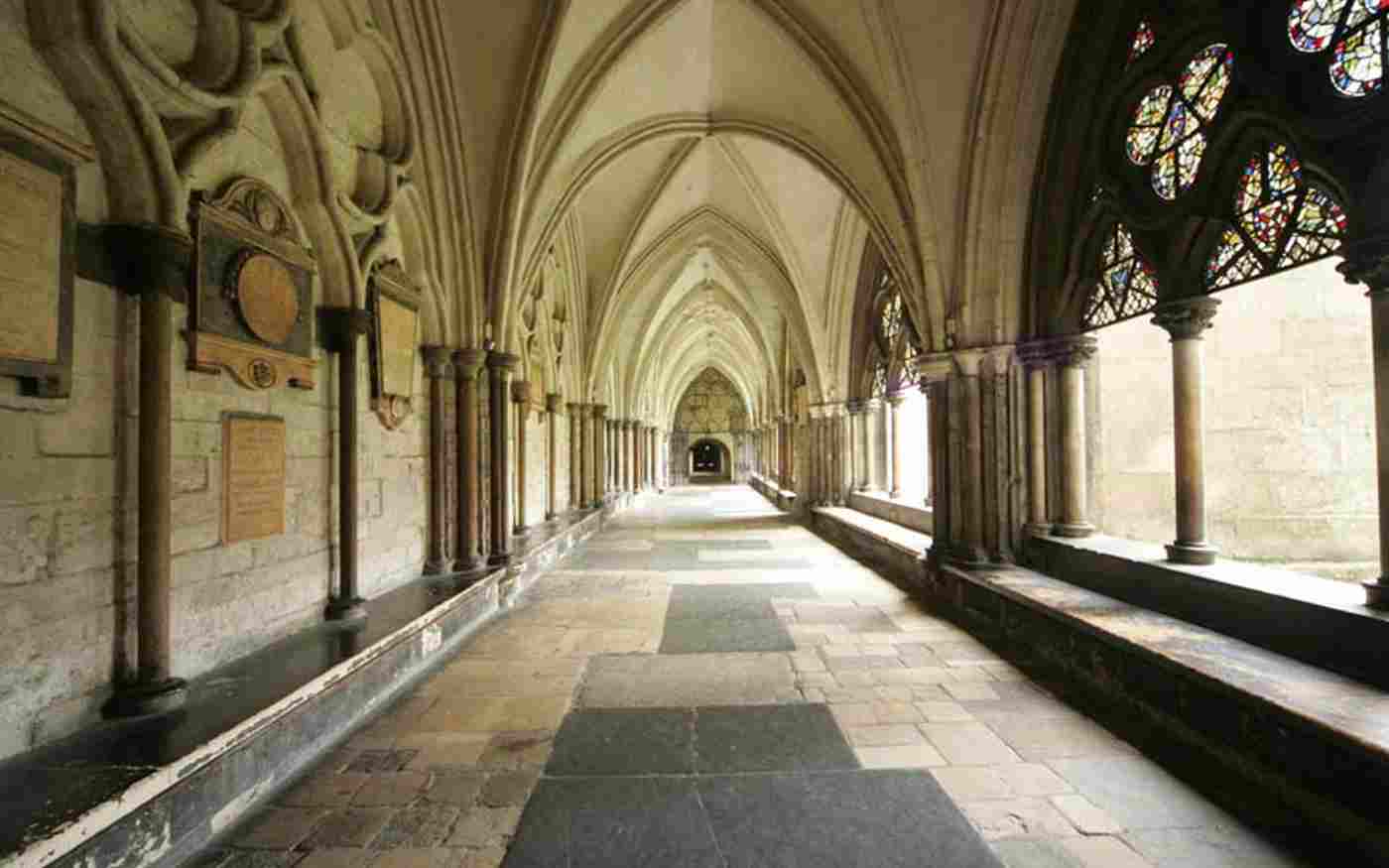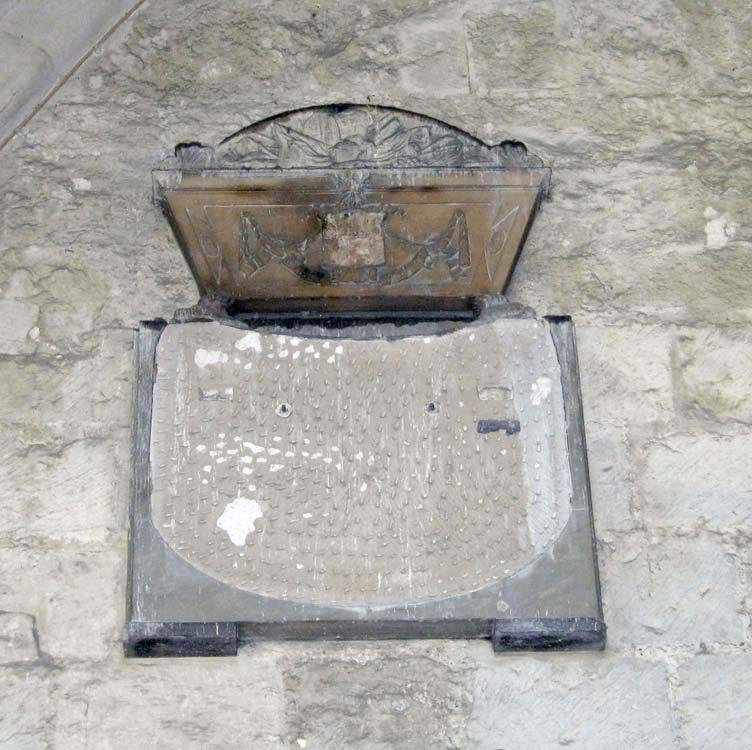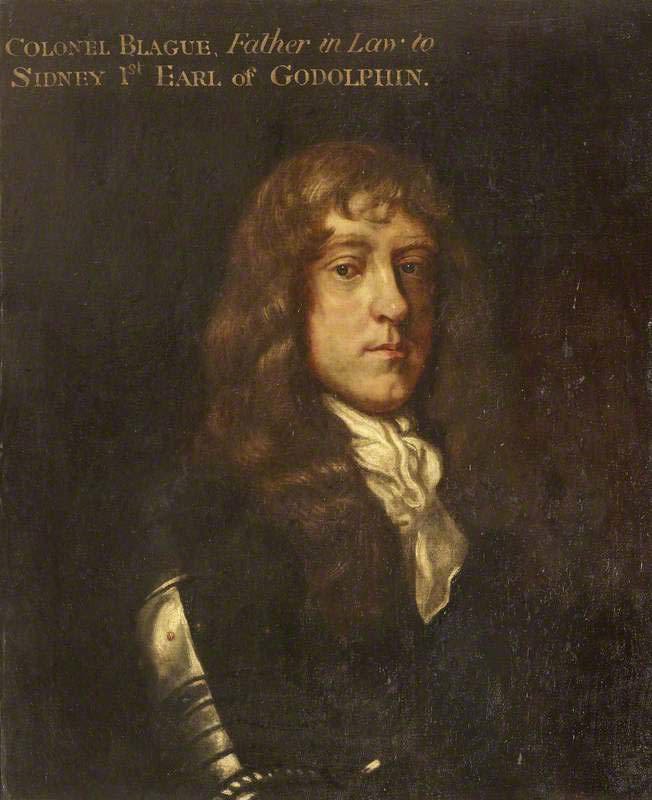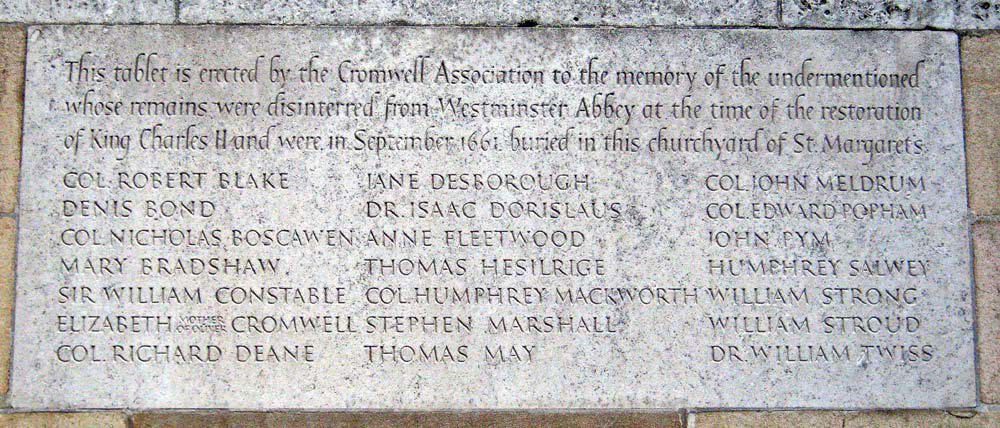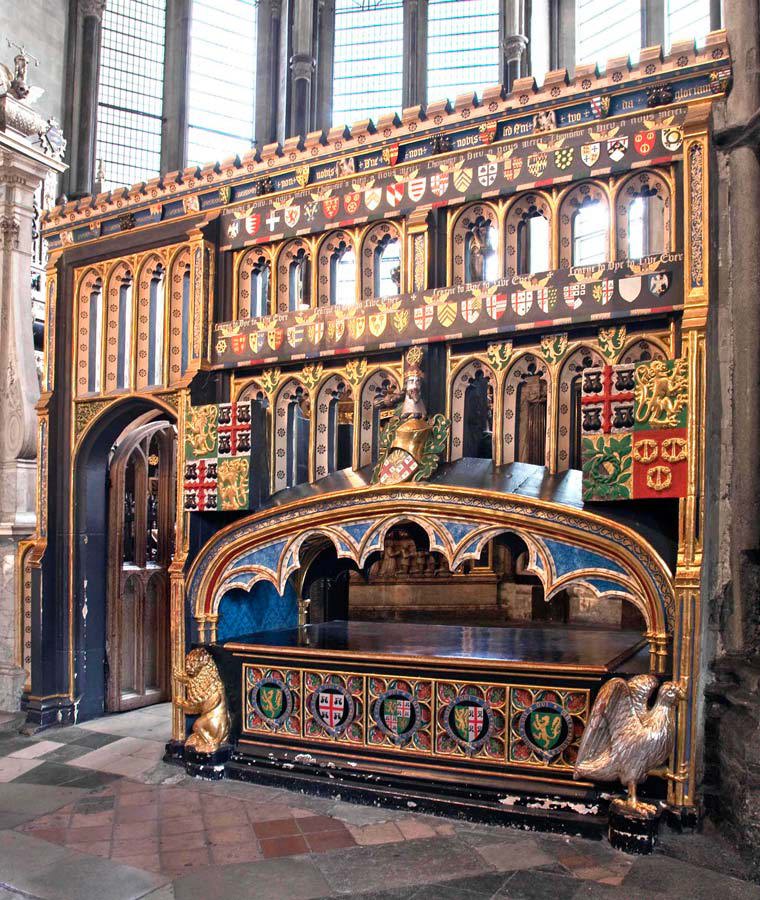Sir Bernard Brocas
In the chapel of St Edmund in Westminster Abbey is the tomb of Sir Bernard Brocas (1330?-1395). His family originally came from Gascony in France, where they fought for the English cause. Brocas was a favourite knight of Edward the "Black Prince", son of Edward III, and was present at the battles of Poitiers and Crecy. He became chamberlain to Richard II's queen, Anne of Bohemia. He married first in about 1354 Agnes daughter of Sir Mauger Vavasour of Yorkshire, from whom he was divorced. Secondly in 1361 he married Mary daughter of Sir John des Roches. Both these ladies were heiresses. Sir Bernard was appointed Master of the Royal Buckhounds, an hereditary office held by his descendants for three centuries. Katharine, widow of Sir Hugh Tyrell, was his third wife in 1382.
The recumbent effigy on his tomb, depicting him in full plate armour with a sword, seems to have been a later addition although an effigy was in place by 1600 when Camden wrote his guidebook to the Abbey. The shield he carried on his elbow has now gone. Although enriched with gold all the painted decoration had decayed by 1682. An Abbey history book published in 1822 says that in the mid 18th century the whole tomb was painted a yellowish white colour. The tomb was fully restored and re-decorated in 1964.
Around the ledge of the tomb on a brass strip is the original inscription, which can be translated:
Here lies Bernard Brocas, soldier, one-time Chamberlain to Queen Anne of England: upon whose soul may God look graciously. Amen.
His head rests on a helmet on which is his crest, a Moor's head. At his feet is a lion.
The tomb was repaired in the 18th century, by a Brocas relative who lived at Beaurepaire, and the following long inscription in English was then painted on it.
This inscription reads:
Here lies buried Sir Bernard Brocas, third son of Sir John Brocas who had a considerable command of archers at the siege of Calais in 1347, and a lineal descendant from Sir Bernard Brocas younger son of the Earl of Foix in France, who came to England with the Norman King William and in recquital of his services had a grant of lands in Hampshire to the then value of £400 per ann[um] which he chose near Basingstoke, & thereon built a mansion-house & called it Beaurepaire. This Sir Bernard served in the French wars, and being afterward sent against the Moors, overcame the King of Morocco in battle and was allowed to bear for his crest a Moor's head crowned with an old Eastern crown.
His elder brother Sir John being slain in an engagement with the French near Southampton and his second brother Oliver (who was Grand Seneschal of Guyenne and Aquitaine and Governor of Bourdeaux) dying without issue Sir Bernard succeeded to the paternal inheritance both in England and France and having married Mary, daughter and heiress of Sir John de Roches, had a large estate with her, and the hereditary post of master of the Buck-hounds, which was confirmed to him by king Edward the Third, and held by the family till sold in James the First's reign. He was chamberlain to King Richard the Second's queen; and his son, a knight of the same Christian name was carver to his said Majesty.
The son was one of the conspirators against king Henry the Fourth at Oxford & was afterwards taken & executed at Cirencester in Gloucestershire, and he himself having raised a considerable force on the same side, advanced to Reading in Berkshire which place refusing him admittance, he burnt a part of it and made the rest his quarters, till on the retreat of the conspirators forces into Oxfordshire, Sir Bernard's dispersing, he, with many of his adherents became an easy prey to the townsmen of Reading, who executed several on the spot, but sent Sir Bernard to London where he was beheaded on Tower hill in January 1400.
The second part of the above inscription unfortunately gives rather confusing information about the son. The younger Sir Bernard, born about 1354, held royal offices but conspired against King Henry IV and was tried for treason at the Tower of London and beheaded at Tyburn gallows on 5th February 1400. He was buried in the church of the London Greyfriars. He had married Joan daughter of Sir Thomas Middleton and had five children. Son William succeeded to his father's estates.
There are eight shields of arms at the base of the tomb (repainted in the 1960s based on the arms shown in an early manuscript at the British Library) but only four have been identified. These show the arms of Brocas (sable [black] a lion rampant guardant or [gold]); Brocas quartering des Roches (sable two lions passant guardant or); Drury (argent on a chief vert two mullets pierced or) and England impaling quarterly Bohemia and Brocas (although the colours are different).
Brasses and monuments of this family can be seen in the churches of Sherborne St John and Bramley in Hampshire.
Further reading
Oxford Dictionary of National Biography
See also History of Parliament online
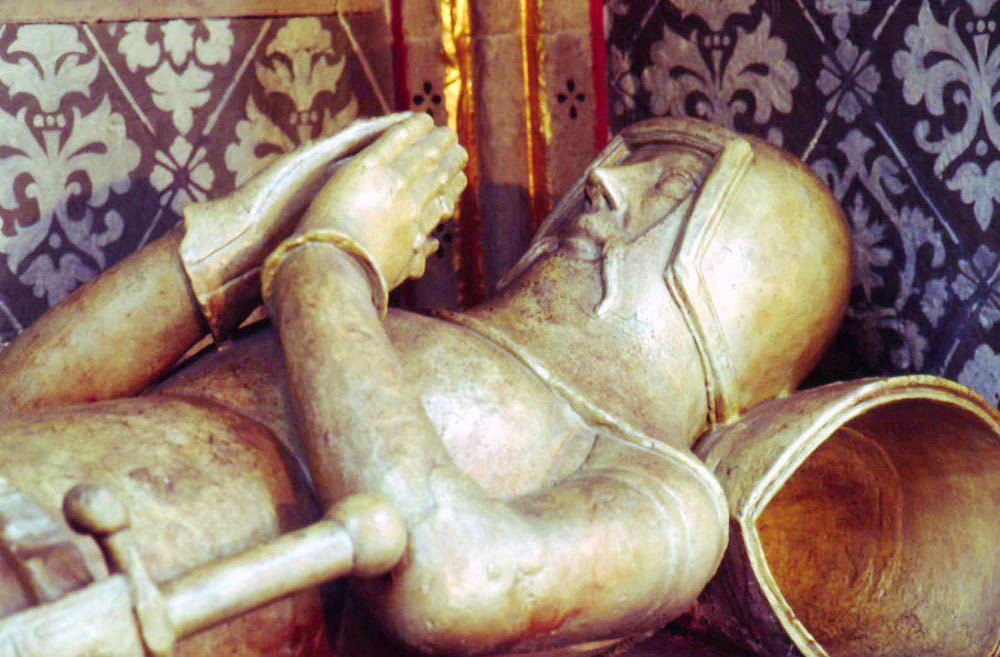
This image can be purchased from Westminster Abbey Library
Image © 2025 Dean and Chapter of Westminster
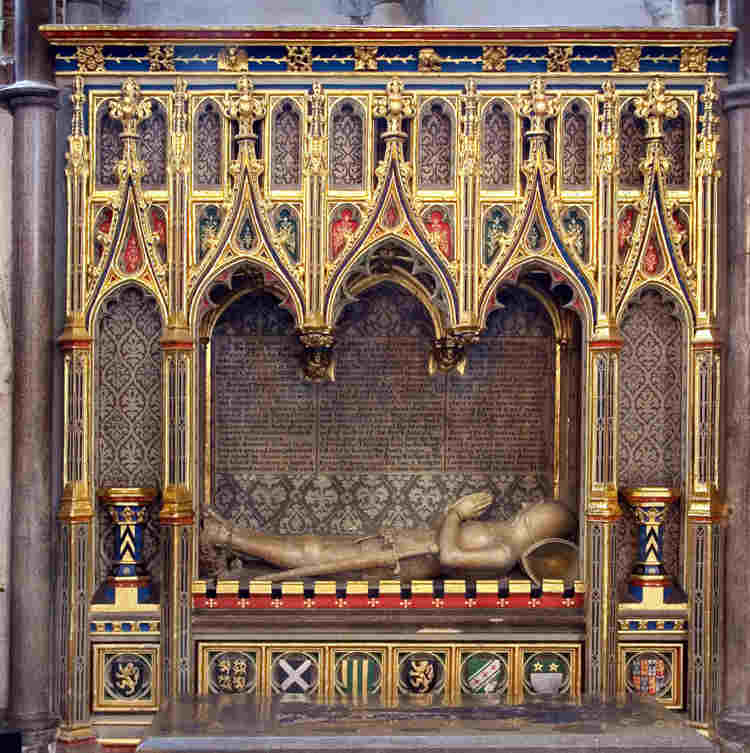
This image can be purchased from Westminster Abbey Library
Image © 2025 Dean and Chapter of Westminster
